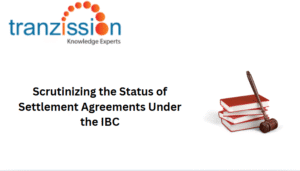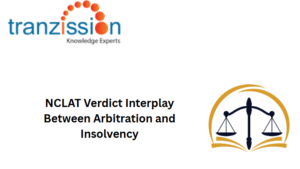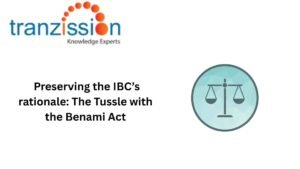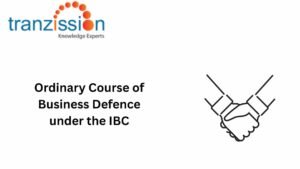
The Doctrine of Piercing the Corporate Veil in Insolvency Cases

Table of Contents
A company has a juristic existence that is independent of its shareholder, known as the figurative ‘Corporate Veil in Insolvency’. The members are protected against obligations resulting from the company’s acts. In a series of judgments, courts have taken a consistent view that the Corporate Veil in Insolvencyof a company should be respected as the veil is the rule and the piercing of the veil is an exception. The Insolvency and Bankruptcy Code, 2016 (IBC) does not explicitly provide for the piercing of the veil, the Adjudicating Authorities and courts have done it to meet the ends of justice.
What Is the Doctrine of Piercing the Corporate Veil in Insolvency?
Definition and Concept:
The doctrine of piercing the Corporate Veil in Insolvency is a legal principle that disregards the corporate entity’s separate legal personality to hold individuals, such as promoters and directors, personally liable. However, this doctrine is often invoked in cases of fraud, misrepresentation, or abuse of corporate identity.
Historical Development:
This doctrine originates from the landmark case of Saloman v. A. Saloman & Co. decided by the House of Lords in 1897, which established the principle of separate legal personality while also recognizing exceptions where the Corporate Veil in Insolvency could be lifted to prevent abuse of the corporate form. Therefore, the doctrine of piercing the corporate veil is traced back to English common law principles and was built into Indian jurisprudence through the Companies Act, Contract Law, and now the insolvency framework
Application of Corporate Veil Piercing under IBC
Piercing the corporate veil in insolvency framework prevents abuse of the corporate structure by individuals who might attempt to shield themselves from liabilities by using a company as a mere facade to perpetrate fraudulent activities or evade legal obligations.
Read more : Understanding the Interplay between Insolvency Law and Contract Law
Fraudulent Transactions and Misrepresentation:
Courts will pierce the Corporate Veil in Insolvency when there is substantial evidence of fraudulent activity, including deliberate misrepresentation of financial information, asset stripping, creating sham transactions, or using the company as a tool to evade existing liabilities. Section 66 of the IBC empowers authorities to hold individuals liable if they carried out transactions with intent to defraud creditors. For instance when directors transfer assets to related parties before insolvency proceedings.
Attribution of Liability During CIRP and Liquidation:
This doctrine is applied when promoters or directors use the corporate structure to shield personal assets while accumulating debt. The ruling in the ArcelorMittal India Pvt. Ltd. v. Satish Kumar Gupta affirmed this legal principle in the IBC proceedings.
Preventing Misuse of Limited Liability:
Courts may lift the corporate veil to prevent evasion of legal obligations or unjust enrichment. Such as if they are found to be abusing the protection of limited liability by using the company structure to commit fraud, engage in improper activities, or deliberately avoid paying debts, essentially preventing them from using the company as a shield to escape personal liability.
Read more : Implications of Public Policy in the Insolvency Process
Key Considerations in Piercing the Veil
When Can the Corporate Veil Be Lifted?
Courts will typically only lift the corporate veil in situations where the company’s structure is being used to perpetuate fraud, evade taxes, or engage in other illegal activities that harm creditors or the public interest. In insolvency law, courts will lift the veil when fraudulent intent has been proved, abuse of corporate personality, and misrepresentation during insolvency resolution. When deciding the lift the corporate veil, courts may consider factors like the degree of control exercised by shareholders, the level of intermingling of company and personal assets, whether the company was established to deceive creditors, and the overall fairness of the situation.
What are the limits of this doctrine?
The doctrine can only be used to lift the veil when there is impropriety, and the impropriety must be linked to the company’s use to avoid liability. The court cannot pierce the corporate veil just because it thinks it’s in the interest of justice, or if the wrongdoer had control of the company and used it to commit fraud or deceive others, or actions caused damage to the plaintiff. Therefore, courts should avoid lifting the veil unless there is clear evidence of fraud or abuse and principle must balance accountability with maintaining the sanctity of corporate personality.
Case Studies: Piercing the Corporate Veil under IBC
A notable case on this subject matter is SBI v. Videocon Industries Ltd. where the NCLT lifted the corporate veil between 13 subsidiary companies of Videocon due to their close interlinkage in operations and management, including shared directors and assets. Therefore, the Tribunal effectively treats them as a single entity for insolvency proceedings. This demonstrates how courts can pierce the veil when companies are used as a facade to avoid liability. The NCLT in Som Resorts Pvt Ltd case lifted the veil of the corporate debtor to identify the true parties at default in an insolvency proceeding, highlighting the application of this principle even in cases where there might be a single company involved. Where the company’s directors transferred assets to related parties, intending to defraud creditors, the NCLT ordered personal liability on the directors by piercing the corporate veil.
International Perspectives
In the United States: Similar to India, courts can lift the corporate veil in certain circumstances, such as when a company is involved in fraud or misconduct, which is frequently invoked under the Chapter 11 bankruptcy Code. The shareholders, directors of the company, and its owners may be held personally liable for the corporation’s actions or debts without any limitation.
In the United Kingdom: English courts are generally cautious about lifting the corporate veil and will only do so in exceptional circumstances where it is necessary to achieve justice. The party seeking to lift the corporate veil must prove that individuals involved deliberately used the company structure to engage in improper conduct. If the veil is lifted, individuals behind the company may be held personally liable for the company’s debts or obligations.
Challenges in Piercing the Veil under IBC
Balancing Corporate Autonomy and Accountability:
Creditors of insolvent corporations often ask courts to pierce the corporate veil and hold shareholders personally liable for a corporate obligation. The excessive intervention of courts and other regulatory authorities could undermine investor confidence.
Evidentiary Burden:
To successfully pierce the veil, a creditor must demonstrate clear evidence of a controlling stakeholder’s dominance over the company and that such control was used to commit fraud or injustice against creditors, which can be difficult to establish.
Scope of Judicial Discretion:
The legal concept of “piercing the veil” can be interpreted differently by different courts, leading to application and uncertainty for creditors seeking to hold shareholders liable.
FAQs
1. What is the doctrine of piercing the corporate veil?
“Piercing the corporate veil” is a legal doctrine where a court disregards the separate legal entity of a company and holds its shareholders or directors personally liable for the company’s debts or actions.
2. How is this doctrine applied under the IBC?
This doctrine allows a court to disregard a company’s separate legal identity and hold its shareholders or directors personally liable if there is evidence of fraud, substantial control of the company used to evade legal obligations or other situations where upholding the corporate veil would result in an equitable outcome.
3. What are the limitations of piercing the corporate veil?
The corporate veil can only be pierced in limited circumstances, such as the impropriety must be linked to the use of the company to avoid or conceal liability, the wrongdoer must have control of the company, cases which do not involve serious misconduct, and just because it is thought to be necessary in the interests of justice.
Conclusion
The corporate veil has been pierced when courts have found that a corporate entity is being abused for committing fraud. The doctrine of piercing the corporate veil is a critical tool under insolvency law to address fraudulent activities and ensure accountability. The veil has been pierced by courts in insolvency matters to ascertain the identity of the resolution applicant for an insolvent company to prevent back-door entry to erstwhile management. Hence, its judicious application under the IBC helps maintain fairness and transparency while avoiding the abuse of corporate structures.





